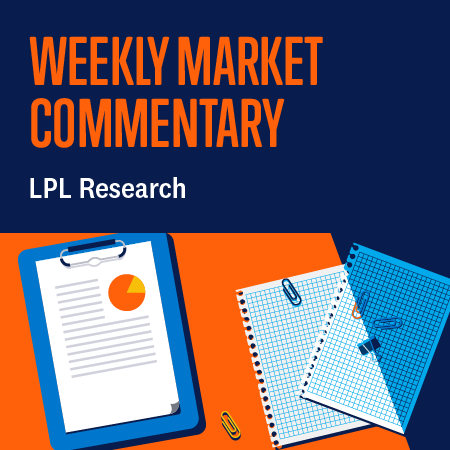Indian Prime Minister Narendra Modi’s recent victory in the national elections was muted at best. While he secured a rare third term in the nation’s highest office, his decisive legislative supermajority failed to materialize. Modi has made revitalizing the Indian economy and increasing foreign direct investment (FDI) a cornerstone of his pro-business platform. With markets adjusting to the unexpected outcome and new legislative circumstances, he and his party now pursue cementing the economic gains generated in his earlier terms, to ensure India continues making strides towards a modern capitalist economy that includes the wider populations and supports all Indians. Global markets will be monitoring the composition of the new cabinet and the introduction of the budget in July to ascertain that the Modi doctrine remains relevant, pro-business, and above all else, pro-India.
Indian Prime Minister Narendra Modi’s recent victory in the national elections was muted at best. While he secured a rare third term in the nation’s highest office, his decisive legislative supermajority failed to materialize. Modi has made revitalizing the Indian economy and increasing foreign direct investment (FDI) a cornerstone of his pro-business platform. With markets adjusting to the unexpected outcome and new legislative circumstances, he and his party now pursue cementing the economic gains generated in his earlier terms, to ensure India continues making strides towards a modern capitalist economy that includes the wider populations and supports all Indians. Global markets will be monitoring the composition of the new cabinet and the introduction of the budget in July to ascertain that the Modi doctrine remains relevant, pro-business, and above all else, pro-India.
The first quarter earnings season is largely in the books, and it was excellent. In fact, S&P 500 earnings per share (EPS) would have been up double digits in the quarter if not for a big loss Bristol Myers Squibb (BMY) absorbed in an acquisition. Even with that nearly three-point drag from the drugmaker, a nearly 7% increase in earnings — the biggest since the first quarter of 2022 — is impressive. Big tech strength was again the primary driver, and estimates impressively rose.
The post-pandemic economy is treating people very differently, creating a headache for central bankers. The extreme differences can often get traced back to living situations, as renters have a very different experience than homeowners. Since millions of homeowners refinanced mortgages to extremely low rates a few years ago, the economy is less sensitive to interest rate policy. In fact, the Jackson Hole Economic Policy Symposium sponsored by the Kansas City Federal Reserve in August will debate the effectiveness and transmission of monetary policy because of these post-COVID-19 dynamics, likely revealing important investment implications.
It continues to be a challenging environment for a lot of fixed income markets, especially higher quality markets. With the Federal Reserve (Fed) seemingly unlikely to lower interest rates until after the summer months (at the earliest), the “higher for longer” narrative has kept a lid on any sort of bond market rally. And while falling interest rates help provide price appreciation in this higher-for-longer environment, fixed income investors are likely better served by focusing on income opportunities. That’s where preferreds come in. With yields still elevated relative to history, we think preferred securities are an attractive option for income-oriented investors.
“Sell in May and Go Away” is one of the most widely used maxims on Wall Street. There is no shortage of financial media coverage on this topic as the calendar turns to May. However, this phrase may be more rhyme than reason, as stocks tend to trade higher during this period (especially more recently), subject to potentially elevated volatility. Of course, seasonality is one factor that could influence markets, but the economy and monetary policy are much bigger factors. With the Federal Reserve (Fed) pointing to higher-for-longer monetary policy last week (before Friday’s softer jobs report), we also explore how stocks perform during prolonged Fed pause periods.
Last week was a pivotal one for markets, with the S&P 500 coming off a 3% weekly decline the week before. In terms of economic data, we got our first look at first quarter gross domestic product (GDP) as well as the March reading of the Federal Reserve’s (Fed) favorite inflation measure — the core PCE deflator. If that wasn’t enough to digest, over 150 S&P 500 companies reported quarterly earnings last week, including the first batch of big tech names. Stocks passed the test, with the S&P 500 up 2.7% for the week, recapturing most of the prior week’s losses despite a mixed GDP report and a double-digit decline in shares of social media giant Meta (META) on April 25, after its results. Here we recap the week’s events and check in on sentiment.
Volatility has come back into the market as the narrative shifted toward a higher-for-longer monetary policy backdrop. Signs of sticky inflation and a resilient economy, including a strong labor market, have underpinned the change in expectations. Yields have reacted by rerating significantly higher this month, while stocks have pulled back from overbought conditions. Technical damage is beginning to mount on the S&P 500, but its longer-term uptrend remains intact. The U.S. dollar has followed yields higher, creating headwinds for U.S. multinationals and currency stability headaches for other central banks.
As the first quarter earnings season kicked off on April 12, expectations for the energy sector were decidedly negative. That low bar has tempted analysts to forecast a series of positive surprises as recent data releases for both the U.S. and China suggest a stronger economic underpinning, and the manufacturing sector appears to have bottomed in both countries. Oil demand — and prices — typically follow rising manufacturing and factory output, while rising consumer sentiment normally portends an increase in air travel, which also requires higher oil allocations.
First quarter earnings season kicks off this week with several big banks reporting this Friday, including sector bellwether JPMorgan Chase (JPM). This quarter will seem quite similar to the fourth in terms of growth and drivers, with mega cap technology leading the way. But importantly, the point when the “493” will start contributing to overall profits is drawing closer (the 493 refers to the S&P 500 minus the seven mega cap technology stocks). Here we preview first quarter earnings season, which will benefit from an improving economic environment and continued strength in technology.
The initial public offering (IPO) market allows institutional investors to incorporate the macroeconomic landscape with individual corporate earnings data — and future earnings forecasts — to ascertain a share price that will hold up to analyst and media scrutiny coupled with overall market dynamics. However, the IPO market has increasingly included allocations for a retail tranche designed to include clients of brokerage firms that receive shares during the issuance stage of the IPO process. So-called “friends” of the company going public also receive shares via Directed Share Programs (DSPs), but this typically lowers the amount of shares that are available to retail clients. For retail clients, the IPO market is far from a level playing field. The IPO process awards the largest portion of new shares to the institutional market by a wide margin. Here we provide an update on recent IPO activity, performance, and discuss why IPO activity matters for markets.
The difference between strategic and tactical investment time horizons can be likened to the ebb and flow of tidal patterns in oceans. Strategic investing mirrors the steady rise and fall of the tides, focusing on long-term goals and expectations more stable akin to the predictable rhythm of oceans. On the other hand, investing in tactical time horizons resembles the dynamic nature of changing tides, responding to short-term market conditions like unpredictable surges and waves in the sea. Here we compare and contrast these two distinct processes and recap our recent strategic asset allocation change.


